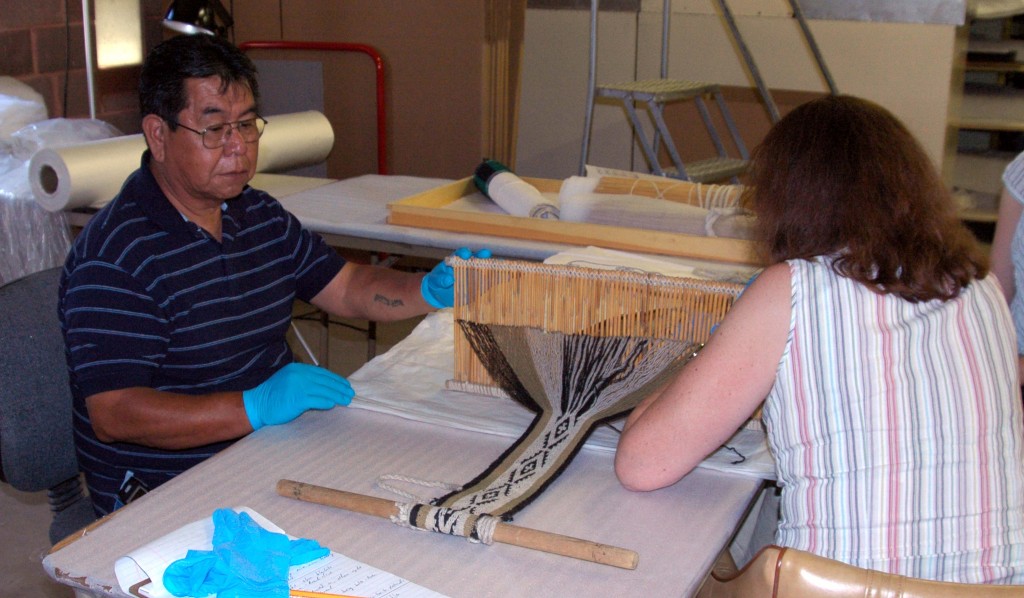
Ensuring that the objects in MNA’s collection are properly stored and cared for is one of the core tasks of the museum. Guided by its Preservation Plan, MNA has made steady progress in building institutional capacity to achieve physical and intellectual control and improve the preservation of its collections. This work would not have been achieved without the support of Betsy and Harry Easton in the construction of the Easton Collection Center (ECC) or the essential support of numerous Federal agencies and Foundations.

Austin Lomatewaima (Hopi Weaving Instructor) and Cara Varnell (Textile Conservator) creating storage mount.
Protecting collections from pests
To protect collections from insects and other infestations in a safe and environmentally friendly manner, MNA has adopted an integrated pest management strategy or IPM. The integrated pest management strategy uses physical, mechanical, cultural, biological and educational methods to eliminate infestations. Chemicals are used as a last resort.
Often the first step is to identify the problem by contacting an entomologist to identify any insects or larvae and determine if it poses a problem.
At MNA we freeze objects to kill off any infestation without chemicals. While most items, such as rugs and baskets, can be safely frozen, freezing is not suitable for every object. For instance, composite objects such as painted wood sculptures can be damaged by the freezing process.
If you are considering freezing an object of your own, we recommend consulting a professional conservator. If you want to know more about pest control, Common Sense Pest Control: Least Toxic Solutions for Your Home, Garden, Pets and Community by William and Helga Olkowski and Sheila Daar, 1994, provides guidance and advice for using both non-chemical and chemical (pesticide) treatments.
Freezing Procedure for Infested Objects
- Seal the item in a clear plastic bag so that you can see it. To prevent moisture condensation, try to squeeze out as much air as possible before sealing the bag with a twist-tie, tape or other means. You can also use Ziplock bags.
- Place the item in a freezer set at its coldest setting and that has been running for at least 24 hours. It is better if the freezer is empty. The best type of freezer to use for this purpose is a chest freezer, because the cold air will not flow out like it will in an upright freezer. But a problem with a chest freezer is that the bottom often stays fairly warm, so place a rack or empty box in the bottom to elevate the infested item.
- Freeze the item for at least 5 days. Ideally, the freezer should achieve and maintain a temperature of at least minus 4°F during this time. You can use an inexpensive indoor-outdoor thermometer to track the temperature in the freezer.
- Remove the item, let it thaw and then carefully vacuum the piece to remove any bug residue.
- Monitor the item for a few months to see if any new infestation occurs. If it does, repeat the freezing procedure.
